Warped Diamond Girdles – Do They Really Exist?
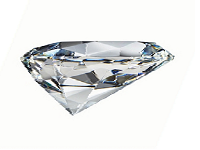
Are warped diamonds possible?
If you had been doing some research on buying diamond rings online, you might have heard of a man named Fred Cueller aka “The Diamond Guy”. You might also have come across a term coined by him called the “warped girdle” and this is a misleading term that I want to address in this article.
You see, the problem here is that “The Diamond Guy” advices consumers to look at proportion figures for the diamond’s crown, pavilion, and girdle. If the percentages (crown, pavilion & girdle) do not add up to the total of the depth percentage, then that diamond is likely to be ‘warped’ and you should avoid buying the stone.
This is some serious misinformation and I’ll explain to you why below…
The formula Fred Cueller defines for determining diamond warpage appears to be simple math.
Total Depth = Crown Height + Maximum Girdle Thickness + Pavilion Height
While I won’t totally discredit everything Fred Cueller had written in his book “How to Buy a Diamond“, readers can get confused and misguided with the term “warped diamonds”. This confusion stems from the lack of explanations when he tries to over-simplify things with the above equation.
You see, the measurements of a diamond’s proportions can get pretty technical. Most consumers are not well-informed and even the majority of jewelers don’t even understand it themselves.
So, How Are the Values in the GIA Proportions Table Calculated?
Certificates issued by gemological labs also offer no explanations on how girdle thickness measurements are taken and displayed. Instead, you need to do advanced research on the Internet or via other academic sources like gemological books to find out more.
For your convenience, I had done the prior research on your behalf. You can refer to GIA’s webpage to learn more about how the diamond’s proportions are measured and displayed.
That said, unless you have a keen eye for details or have a solid background in academic science, most of the technical data will sound gibberish to you. To keep things simple and understandable, I did a summary to touch only on the critical stuff here.
In essence, the total depth% of the diamond is calculated and rounded to the nearest 0.1%.
The crown height %, pavilion depth % and girdle thickness % are calculated based on averages and rounded to the nearest 0.5%.
Here’s Where We Run Into Problems
Based on the formula stated by Fred Cueller, we are attempting match an accurate total depth % measurement (captured with a Sarin machine from the top of table facet to culet) against the sum of 3 inaccurate values that had been individually rounded.
In statistics, the compounding of errors will give rise to even bigger errors! I will explain this using a real-life example of the proportions diagram extracted from a GIA report.
Take a Look at An Example Here…
0.70 Carat I SI1 Ideal Cut Round Diamond – GIA #5182142475
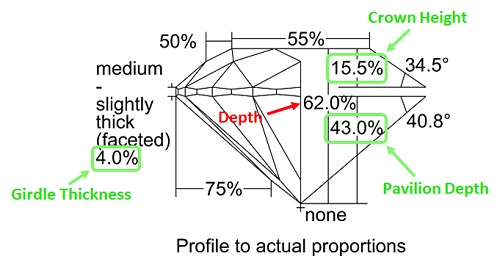
Ok, Let’s Count Now…
Total Depth (62.0%) = 15.5% (crown) + 4.0% (girdle) + 43.0% (pavilion)
= 62.5%
Oh gosh! It doesn’t add up! Is this diamond having serious issues with it? So, what’s the explanation behind this? To do a correct (and hardcore) analysis, you will need an in-depth Helium or Sarin report that shows you all the data on facet angles and proportions.
For an example’s sake, let me show you a quick calculation due to rounding errors that might be a reason behind why numbers don’t add up.
Total Depth = 15.31% (15.5%) + 3.76% (4.0%) + 42.93% (43.0%)
= 62.0% (62.5%)
Black = Simulated Values Blue = Values That Were Rounded Off by GIA
The rounded numbers give rise to errors that result in a higher calculated depth!
I’m just going to throw in a couple more ideally cut diamonds as examples you can use to calculate for yourself: 1.02 carat E-VVS1 ideal cut round diamond & 1.53 carat D-VS2 ideal cut round diamond.
Bear in mind that these are well cut diamonds for light performance and have top notch cut precision. There’s nothing wrong with these stones and both pass my standards to be purchase-worthy.
Who’s Warped? Fred Cueller or the Diamond?
When Fred Cueller uses the term warped to label diamonds with these discrepancies, that’s only one man’s view of selecting diamonds and it isn’t very accurate. The truth is, Fred Cueller doesn’t even take a scientific approach to associate “warpage” with a diamond’s light performance.
The point I am trying to bring across here is that even if the numbers do match up, it doesn’t guarantee a diamond’s beauty.
By the way, it’s no coincidence that other diamonds are “warped” in his view except for those sold by him. There’s a more sinister agenda at work here to scare people away from buying diamonds from other honest jewelers!
Lastly, there are ideally cut diamonds with nice optical symmetry and superb light return that would often fall under Cueller’s classification of ‘bad’ diamonds. If you blindly followed the bad advice, you would be passing up on some really great stones!
Here’s one perfect example to highlight this.
This super ideal cut diamond is cut for extreme light performance and precision. However, it would have been classified as a warped diamond erroneously if you added up the numbers for total depth!
Shopping Based on Numbers Have its Limitations
With the example that I had shown above, I hope this clears up the questions on why numbers don’t add up. They sometimes don’t because of the way GIA reports measurements and NOT because there are issues with the diamond.
With a little common sense, you probably know you need to avoid stones with large girdle variations like “very thin – extremely thick”. Such huge variations are tell-tale signs of poorly cut stones and weight retention tricks employed by cutters. Obviously, you don’t need an expert to tell you they aren’t good choices.
Here’s my last piece of advice, don’t get too caught up with numbers. At the end of the day, what you (as a consumer) want is a nice looking diamond and the best way to achieve that is to utilize tools like the Idealscope/ASET scope when making buying decisions.
Related Articles
Leave A Comment

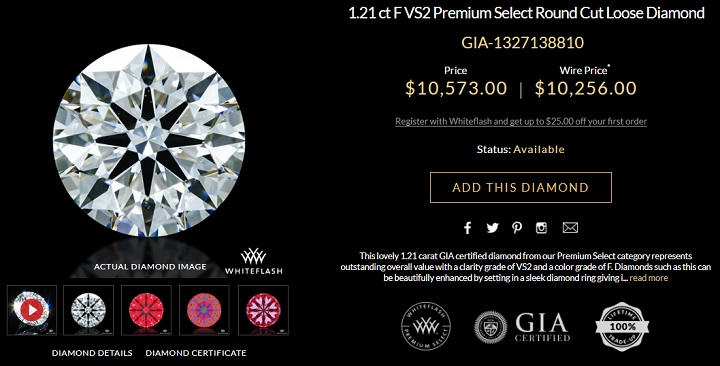

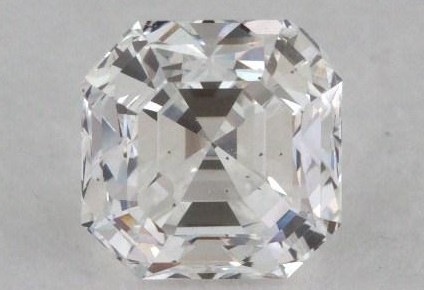
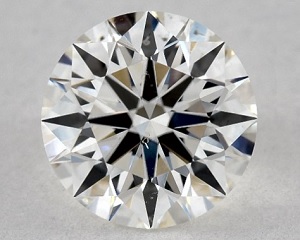
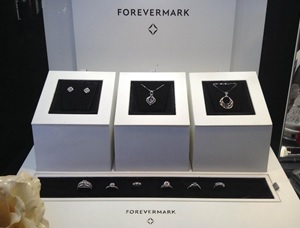
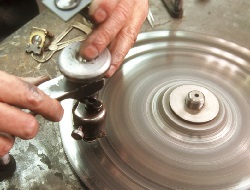









4 Comments
First off, I want to thank you for how you’ve already helped me so much with my engagement ring search process through your many informative articles, which I have spent the past 2 days reading.
I am preparing to propose to my girlfriend of 5 years, Morton. Yesterday, we visited a dealer recommended by a friend, Ultimate Diamond, in NYC’s diamond district yesterday. We actually had a good experience, however, after reading your articles and doing some preliminary website perusal, I am convinced that buying online is the way to go.
So far, I have mainly been looking at James Allen and Blue Nile. However, Morton asked me to look at Brilliant Earth as well, and after reading about not only their standards of ethical sourcing, but also how they give back to communities, I agree that buying with them feels like the right move for us. Of course, I still want a stunning product at the right price as well.
1) What are your thoughts on Brilliant Earth in terms of diamond quality and pricing, when compared to James Allen, for example?
2) Do you know if Brilliant Earth would send ASET images on request?
I am looking for a cushion ideal cut, 1.25-1.55 carat, colorless, VS1-VS2 eye clean diamond in the 8-11k price range. I seem to be able to find these with VG-EX polish/symmetry, faint/none fluorescence, no cutlet, and very good or excellent proportions for table, depth, and L:W, as recommended in your table for cushion cut diamonds. However, with regard to girdle thickness, almost all of the diamonds I am finding range as high as thick, and often very thick (which is in your fair/poor category).
3) Can you please help explain girdle thickness to me? Why it is always listed as a range? Why is thicker is considered worse? How much would a thick or very thick girdle detract from stone quality if the rest of the above parameters are met? Also, is something that might go from medium to very thick better or worse than something that goes from slightly thick to thick?
4) If I do decide to go with Brilliant Earth and cannot get ASET images, with an ideal cut, colorless, eye clean diamond with VG-EX polish/symmetry and the other parameters mentioned above, can I be certain that it will still appear brilliant in real life, not just in the website pictures (even if it is not the absolute most brilliant among 3 equally rated diamonds that all look great on the website, as the ASET images would distinguish)? And for these hypothetical diamonds that otherwise seem identical, is price a fair reflection of the true brilliance based on ASET, or is performing ASET not routinely done/taken into account?
Thank you so much for your assistance. I really appreciate your time and guidance!
1) Brilliant Earth is largely a vendor that deals with a virtual inventory and it is very hard to find well cut diamonds at Brilliant Earth. This is due to their sources as well as a general lack of data provided in their listings. When you compare James Allen vs Brilliant Earth, the prices at BE are much more expensive and this is due to their higher profit margins as well as social initiatives. You are directly paying more for your purchase which goes towards the “giving back” to communities. If you are looking for lab created diamonds, Brilliant Earth is the vendor of choice as they specialize in that: https://beyond4cs.com/go/brilliantearth/
Otherwise, for all other types of diamonds, JA is a fantastic place to shop: https://beyond4cs.com/go/ja/
2) I had explicitly said that those are just general guidelines. What matters most is how the individual facets come together for light performance. Don’t place too much weight on how the proportions mean. But rather, pay attention to tangible data like videos. They reveal more about light performance and cut quality than a piece of paper would.
3) You can read up on that topic here: https://beyond4cs.com/grading/girdle-thickness/ For fancy shape diamonds, a girdle thickness of thick or very thick are acceptable. It depends on a case by case basis. The key criteria here is light performance and cut quality. Having too thick of a girdle (i.e. extremely thick) means more weight is trapped in the side profile and this causes the diamond to face up smaller. That’s the disadvantage of having a thicker girdle but on the flip side, you get better protection against chipping.
4) Prices are largely affected by the 4Cs. A well cut diamond generally costs more than a poorly cut diamond. That said, it’s not a hard and fast rule as subtle differences in other aspects play into prices. Cut is only one aspect that affects pricing and in my opinion, it’s the most important thing that matters when choosing a diamond.
I did a search for you and would recommend these diamonds:
https://www.jamesallen.com/loose-diamonds/cushion-cut/1.52-carat-g-color-si1-clarity-sku-5172142
https://www.jamesallen.com/loose-diamonds/cushion-cut/1.50-carat-g-color-vs1-clarity-sku-3000343
https://www.jamesallen.com/loose-diamonds/cushion-cut/1.50-carat-f-color-vs2-clarity-sku-3640821
All 3 are extremely well cut for light performance and are eyeclean. I have a very strong preference for the first diamond as it offers the best value for money.
Thank you for the time and effort you put into your response. I truly deeply appreciate it. The James Allen diamonds you selected are beautiful!
I wanted to clarify your statement regarding Brilliant Earth (and I did read the article you sent with your review).
What do you mean that it’s hard to find well cut diamonds at BE due to lack of data? From what I see on the web pages, there is the same information for each diamond as there is for JA diamonds, including a high definition 360 degree interactive video of the actual diamonds.
As far as the price, I don’t mind paying a little extra since 5% of the profits at BE are donated.
Would you please be able to look at these 3 diamonds I picked out from BE and make any comments/recommendations? I believe they should all be eye clean for starters. If you still feel strongly that these diamonds might not be as well cut as they seem due to lack of data, please explain to me what exactly is missing or raises that red flag. If that is the case, I will likely ultimately go with JA.
https://www.brilliantearth.com/loose-diamonds/view_detail/5584846/
https://www.brilliantearth.com/loose-diamonds/view_detail/5639083/
https://www.brilliantearth.com/loose-diamonds/view_detail/5535557/
Speaking of JA, I also picked out this CanadaMark diamond from them, which might be the next best thing after BE in terms of the social/ethical aspects. It really seems to be the only CandaMark diamond that meets my specifications. I would very much appreciate if you could please give me your opinion on how it stacks up against the other JA diamonds you recommended.
https://www.jamesallen.com/loose-diamonds/cushion-cut/1.51-carat-g-color-vs2-clarity-sku-4525778
Thank you again!
Brilliant Earth has been improving in this aspect and been adding videos to more of their listings. JA has 100% video listings while BE has significantly less. A big majority of their diamonds still lack tangible information. Also, BE doesn’t curate diamonds like JA with their True Hearts diamonds.
That said, it is still possible to find well cut diamonds but that will take some patience, effort as well as experience,
The diamonds you chose from BE only show a sample image which proves my point. You cannot make a proper shopping decision without videos.
https://www.jamesallen.com/loose-diamonds/cushion-cut/1.51-carat-g-color-vs2-clarity-sku-4525778 is a well cut cushion as well. Performance wise, it is on par with the 2 stones above. Pricewise, it’s going to be slightly expensive due to the Canadian origins. But if supporting Canadamark means something to you, you have a winner here.